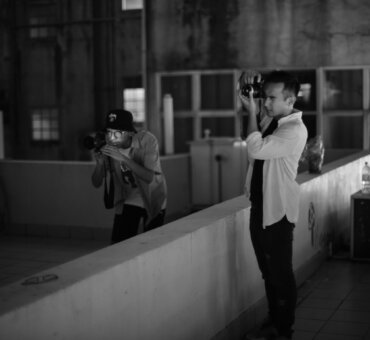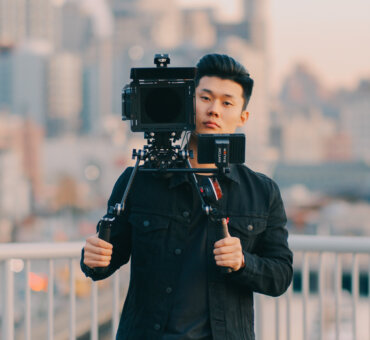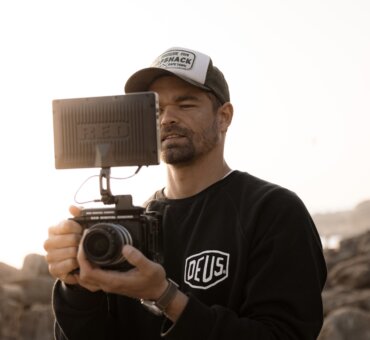Creativity is full of paradoxes — not the least of which is the fact that having absolute creative freedom is often highly uncreative. It’s a phenomenon called “paralysis of choice.” The more options we have, the harder it is to choose anything. So we do nothing. When everything is an option, somehow we find ourselves optionless. Which is why almost every artistic medium develops its own limitations over time.
Poets work within rigidly defined poetic parameters. Painters work within the limited space of their canvas. (G. K. Chesterton once said, “Art consists in limitation. The most beautiful part of every picture is the frame.”) And even screenwriters adhere to act structures defined millennia ago. Art wants limits. As poet Paul Valéry wrote: “A person is a poet if his imagination is stimulated by the difficulties inherent in his art and not if his imagination is dulled by them.”
Occasionally, though, the inherent limitations of an art form are not enough. Sometimes artists need to tie one hand behind their back. Composer Igor Stravinsky said: “The more constraints one imposes, the more one frees one’s self. And the arbitrariness of the constraint serves only to obtain precision of execution.”
Here are a few other creative constraints we can all learn something from.

SIX-WORD MEMOIRS
Shakespeare said brevity is the soul of wit. (Well, not Shakespeare exactly. Polonious from Hamlet said it.) But we believe brevity is the soul of storytelling. Aren’t all stories a distillation of real experience? What better exercise in distillation than condensing an entire life into just six words? When SMITH Magazine challenged its readers (and a few celebrities) to write their own six-word memoirs, the result ⎯ a book called Not Quite What I Was Planning ⎯ was striking. There’s no room for hedging or qualifying when you have only six words. No room for vagaries. It forces the urgency ⎯ and brutal honesty ⎯ that is the hallmark of any memorable piece of art. A few selections:
Stephen Colbert (comedian): “Well, I thought it was funny.”
Dave Eggers (writer): “Fifteen years since last professional haircut.”
Anonymous, recently single 27-year-old: “I still make coffee for two.”
Chuck Klosterman (writer): “Nobody cared, then they did. Why?”
Elizabeth Bernstein (journalist): “The psychic said I’d be richer.”
Try distilling your life ⎯ or even just a single experience ⎯ into six words, and see what you learn about the essence of a story.

THE EXTERMINATING ANGEL
In the 1962 Mexican film The Exterminating Angel, the guests of a dinner party find themselves inexplicably unable to leave a room. There’s no reason they can’t leave. They just can’t. More than just creative inspiration, the limitations of the story become the story. The guests are unable to leave, and so are we. We have to stay to watch them stay. Creative constraints give this otherwise static film an incredible energy that has made it a classic not just in Mexican cinema, but worldwide. The New York Times named it one of the 1,000 best films of all time.
The lesson here is not just about the power of constraints, but the power of arbitrary constraints. There doesn’t need to be a grand design or reasoning behind the limitations you set for yourself. Sometimes you only understand their meaning once you start working inside of them.

DR. SEUSS, MINIMALIST
You probably think of Dr. Seuss (a.k.a. Theodor Geisel) as a writer who was incredibly creative with words. Which obviously he was. But what you might not realize is how few words he actually used. The Cat in the Hat was written using just 250 different words, all of which were chosen from a first-grade vocabulary list. Then he took it even further. As a bet with the founder of Random House, he wrote Green Eggs and Ham using just 50 different words. Fifty. Five-oh. And beyond just winning him the bet, Green Eggs and Hamwent on to be not only Dr. Seuss’s most popular book, but also one of the best-selling children’s books ever written. If you want to inspire your wildest rule-breaking creativity, the secret (like it or not) might be setting some wildly restricting rules.
I do so like / green eggs and ham! / Thank you! / Thank you, / Sam-I-am!

HENRI MATISSE, SCISSOR ARTIST
Toward the end of his life, Henri Matisse was too sick to work. Multiple surgeries and diseases had left him mostly bedridden. The great painter could no longer paint. But rather than let his limitation be the disappointing period at the end of an otherwise incandescent career, Matisse dedicated himself to a new art form: paper cutouts. During his last decade, using primarily scissors and paper, Matisse produced some of his best-known art ⎯ work he called “drawing with scissors.” His unwanted but quickly welcomed limitation was the key to an entirely new and innovative era of his art. We can’t always choose our constraints, but we can always choose how we respond to them. Our response to limitations often defines us as artists.

GADSBY, THE NOVEL WITH NO E
Here’s a case of taking limitations too far. In 1939, Earnest Vincent Wright wrote Gadsby, a novel that doesn’t contain the letter E. This limitation was not only used to sell the book (a note about the limitation takes up most of the cover), but it’s the only thing anybody remembers about the book. The characters, the plot, the ideas all became secondary to a limitation that, in the end, was more schtick than anything else. The point being, while limitations can be inspiring (maybe even essential), they should never overshadow the work.
Throughout history, limitations have resulted in some of the most compelling pieces of art ever produced. Limitations give our work energy. They give us boundaries to press against. And more than just a trick for overcoming writer’s block, they can act as a catalyst for an entire piece of work. In the end, the rules that constrict us set us free.





















































































